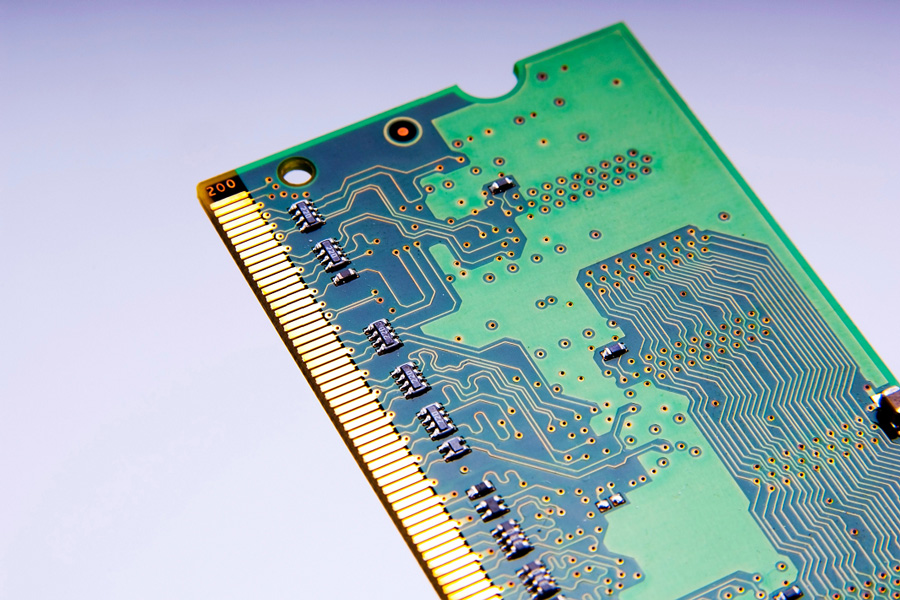Etching often seems to be something creative such as giving shape to a sculpture, or drawing a design on a glass. However, this is a process used to refine and sculpt printed circuit boards. Printed circuit boards are made of different materials as substrate, such as copper, FR4, plastic, aluminum, and so on. However, all these boards have a layer or coating of copper on them which forms the conductive layer. After applying this coat on a blank on a blank board. There may be some portions of copper which need to be removed. This removal of excess copper is called etching. This plays an important role in the making of a PCB. The removal of excess copper defines the lines on the board well and makes it look more refined. There are various processes used for PCB etching.

Type of PCB Etching Processes
You can get the required circuit pattern by using the right type of etching process. Before starting the process, it is essential to design a layout to be sure the end product matches the client specifications. To figure out the portions from where excess copper needs to be removed, the circuit image is transferred onto the board by a process called photolithography. Etching processes can be broadly categorized into two types dry and wet. Primarily etching is done using corrosion as a reactive force in both these methods. However, the materials used to perform these processes differ. Dry etching is done using dry gases, while wet etching is done using liquid chemical solutions. Dry etching helps define the circuits well, while wet etching helps clean the chip or wafer. Certain portions of the chip have an etching mask applied on them with the help of a chemical such as silicon nitride which is etch resistant,
Here are some commonly used wet PCB etching processes.
Acidic Etching: This is used in case copper needs to be removed from the inside layers of the board. This is especially required in rigid boards as they do not bend. This uses acidic chemical solvents such as ferric or cupric chloride. They are sprayed on the board in required proportion. The boards have an etch resistant. Mask on some portions with which these acids do not react as the solvent reacts only with copper.
Alkaline Etching:This is used to remove copper from the outer layers of the board. The solvent is appropriately formulated using hydrogen peroxide, water, chloride copper, and so on. This process is performed in a high pressure vacuum chamber, wherein the alkaline solvent is sprayed onto the board.
Chemical Etching: This process is widely used on metal boards. In this process, corrosive chemical baths are used to wash off the boards. The chemical reacts with the portions which need to be removed. The excess solid copper is dissolved in the chemical bath, and hence there is no question of actual etching or engraving on the board.
Here are some dry etching processes.
Plasma Etching: Dry etching is interchangeably called plasma etching; however, the latter is the subset of the former. In plasma etching, dry gas is converted into plasma in a vacuum-based environment. The plasma produces uncharged free radicals which react with the board surface through which plasma ions are thrown onto the board to remove the excess copper material.
Vapor Phase Etching: In this dry etching process, the substrate is put into a chamber filled with gases. This is done using either of the two isotropic elements, which are silicon xenon difluoride or fluoride, and hence there are no byproducts released which may interfere with the etching process.
Sputter Etching: Technically, this process is quite similar to vapor phase etching. In this case, the substrate surface is exposed to constant bombarding of ions. This constant sputtering of ions supports physical vapor deposition on the substrate. This helps remove the excess material from the surface.
Reactive Ion Etching: Also called RIE, this is a chemical-physical etch procedure. This is widely used in wafer manufacturing to remove the excess layers of copper. Here, there is a reactor filled with gases. Ions are lashed onto the substrate with the help of plasma. The ions react with the surface materials to produce a new gas or a combination of gases which form a polymer layer on the surface. This layer builds up on the surface as well as side walls. The other gas composition actually etches the surface of the substrate. This process is known to provide high accuracy and speeds.
 Shenzhen HongYuan Electronics Co.,Ltd
Shenzhen HongYuan Electronics Co.,Ltd